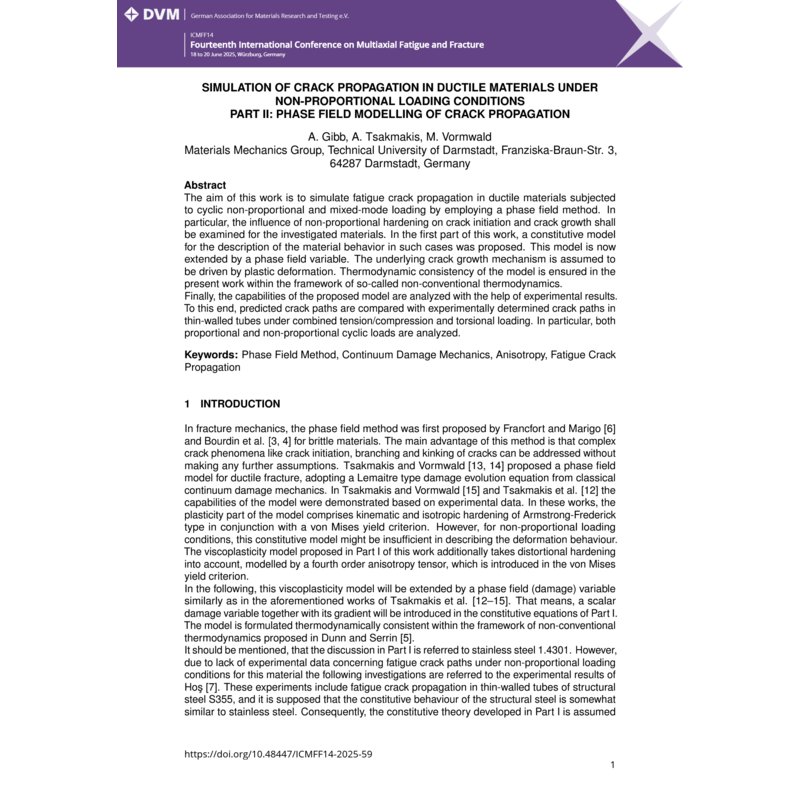- Online only



The aim of this research is to simulate fatigue crack propagation in ductile materials subjected to cyclic non-proportional and mixed-mode loading by means of the phase field method. For the investigated materials, it is to be expected that non-proportional hardening has a major influence on the crack initiation and further evolution.
In the first part of this work a constitutive model for the description of the material behavior in such cases was proposed. This model is now extended by a phase field variable to describe the complex crack phenomena, cf. Tsakmakis and Vormwald [1,2]. The underlying crack growth mechanism is assumed to be driven by plastic deformation. Thermodynamic consistency of the model is ensured in the present work within the framework of so-called…

Datenschutzbedingungen (bearbeiten im Modul "Kundenvorteile")

Lieferbedingungen (bearbeiten im Modul "Kundenvorteile")

Rücksendebedingungen (bearbeiten im Modul "Kundenvorteile")
The aim of this research is to simulate fatigue crack propagation in ductile materials subjected to cyclic non-proportional and mixed-mode loading by means of the phase field method. For the investigated materials, it is to be expected that non-proportional hardening has a major influence on the crack initiation and further evolution.
In the first part of this work a constitutive model for the description of the material behavior in such cases was proposed. This model is now extended by a phase field variable to describe the complex crack phenomena, cf. Tsakmakis and Vormwald [1,2]. The underlying crack growth mechanism is assumed to be driven by plastic deformation. Thermodynamic consistency of the model is ensured in the present work within the framework of so-called non-conventional thermodynamics proposed in Dunn and Serrin [3].
Finally, the capabilities of the proposed model are analyzed with the help of experimental results. For this purpose, predicted crack paths are compared with experimentally determined crack paths in thin-walled tubes under combined tension/compression and torsional loading. In particular, both proportional and non-proportional cyclic loads are analyzed. Fig. 1 shows exemplarily results of the comparison.